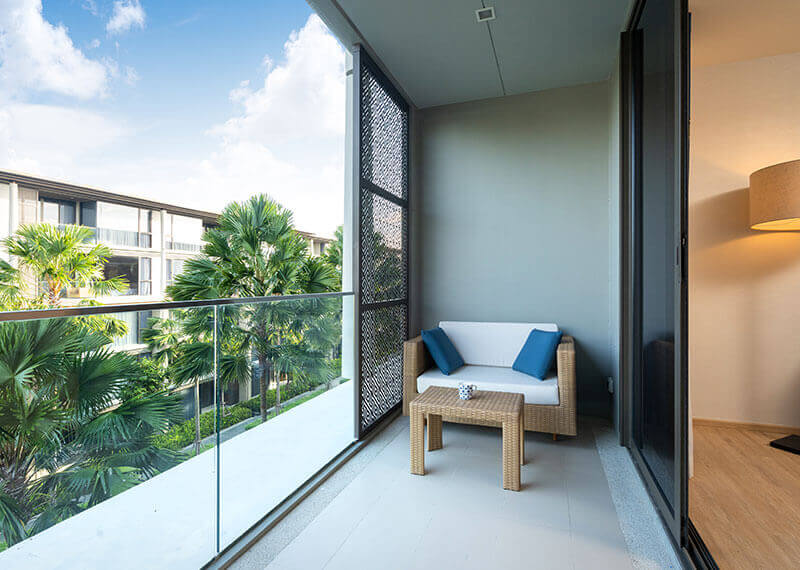
Key Concepts
Commercial real estate finance, like any industry, has a language of its own. The last section of this eBook has a complete glossary of commercial mortgage terms for your reference during your loan process. We do however think it is important to further explain a few key concepts that as a landlord or investor you should understand as they will affect either your qualification or your resulting loan terms.
Having a working knowledge of the below concepts will help facilitate a productive discussion and comparison during the LOI (Letter of Interest) stage with HarborWest. Each of the key concepts below are common discussion topics that are addressed on a Lender’s term sheet
Amortization Period
An amortization period is essentially the length of time the mortgage payments are spread to calculate monthly payment. A fully amortized loan would be paid off at the end of this period, whereas a partially amortized loan would have a remainder or balloon payment at the end. Amortization period should not be confused with the term (or maturity as its commonly known). For example, a commercial mortgage can commonly have a 25-year amortization but a 10-year loan term or maturity. This means that the payments for the mortgage will be spread over 25-years as if the loan were to be paid down to zero at the end of that period, but the actual loan would be called “due and payable” at the end of 10 years. Since the 25-year amortization period was not lived out, there is a remainder or balloon payment due to the lender.
Most often, multifamily properties will have a 30-year amortization and core commercial properties, or owner-user will have a 25-year amortization (30-years on core commercial can be negotiated for stronger deals). It’s always more attractive to lenders to have a lower amortization, as the loan would be paid down quicker and leave more equity in the property – which is important to lenders when evaluating default risk. A lower amortization can sometimes help negotiate lower interest rates or additional perks. However, reducing the amortization period (whether lender determined based on comfort level, or borrower requested for a better deal) creates a higher mortgage payment. Since maximum loan amounts (LTV) is cash flow determined, this higher payment would negatively impact maximum loan amount qualification if the property is “cash flow restricted”.
Loan Amount / Property Value

Fixed Rate Period
This refers to the period of the loan that the interest rate is fixed. Most commercial mortgages are typically “hybrid” loans where the loan is fixed for only a portion of the loan term. For example, on a 30-year amortization & term for a multifamily bank loan, the rate may only be fixed for the first part of that term. Most commonly, those options are 5, 7 and 10-year fixed rate periods. The longer the rate is fixed, the higher the interest rate will tend to be. In rising interest rate environments, lenders are less inclined to offer longer fixed periods as they will want to recapture higher future interest rates when the market rises. Conversely, in a declining interest rate environment – lenders will often offer discounts to push borrowers to longer fixed period programs, as their profit margin is highest at this point.
There are indeed programs with longer fixed period than 10-years can offer up to a 30-year fixed program for select multifamily properties), and there are also programs with lower than 5-years fixed (for example, 1-year fixed or even quarterly adjustable / not fixed rates). These types of loans are to be utilized when you either (1) need the lowest possible interest rate in order to maximize tight loan proceeds and increase LTV, or (2) when the property is not stabilized and there needs to be rehab completed with a plan to refinance. In this scenario, you’ll want a lower prepayment penalty which comes with lower fixed rate periods, or it may be a rehab project with a shorter “bullet” or loan term (say 12-month project), so the rate will float or have a very limited fixed period.

Interest Rate
The interest rate of the mortgage will usually be the most discussed loan term during your process. While the other loan terms in this chapter can be just as important, the cost of the mortgage of course is the primary factor in this entire process. If the cost of obtaining the debt is too high to justify, the remainder of the terms are unnecessary to discuss. Interest rates can be fixed, adjustable, or a “hybrid” where the rate is fixed for a portion of the term and adjustable for the remainder. Interest rates in commercial real estate can range from the 2.50% range for larger multifamily properties in primary markets to 14.00% for raw land debt with private lenders. Obviously, that range is extremely large - but the key concept here is that the interest rate will correlate to the level of risk to the lender. Rate covers risk. Commercial loan requests that are strong (stabilized, preferred geographic area, low LTV, strong leases and historical performance, etc.) will carry lower risk of default and earn a lower interest rate. Conversely, high risk loan requests require a higher rate in order to justify the lender making an offer. Lenders will usually determine interest rate by taking an index rate (example: LIBOR, 10-Year Treasury Rate, Prime Rate) that fluctuates with the market, and adding a “Margin” which is essentially their determination of risk and profit margin.
Within this general parameter of risk vs. rate, negotiated loan terms can also affect the final interest rate. For example, a base rate can be established by a lender for a commercial loan request but have “add-on” options if the borrower elects to have a shorter prepayment penalty, non-recourse vs. recourse, or an interest-only payment period during the loan as a few of the most common examples. Investors can also earn rate discounts from lenders most typically for accepting a lower LTV maximum, sponsor deposits (banking relationship), or an adjustable rate vs. a fixed rate. Fixed interest rates are also usually higher the longer you fix the rate - so a 10-year fixed rate is always going to be higher than a 5-year fixed rate, and you will need to decide if the difference in payment is worth the additional protection period.

Rate Lock
Once the basis for the final interest rate has been established prior to accepting a loan offer from one of CCG ’s lenders, the next consideration is a rate lock. Every lender works differently in this aspect. Most lenders will have the index rate and margin to the rate (collectively the effective rate) determined upfront. However, the index rate used (LIBOR, 10-Year Treasury, etc.) will fluctuate daily with the market. Additionally, a lender’s margin may also increase if the level of risk determined during underwriting ends up being evaluated to be higher than when the loan request was first reviewed. Not all lenders offer rate locks on their loan programs. Lenders that do offer rate locks typically will commit to a 60-day rate lock, but sometimes can be negotiated to 90 days if appropriate. The typical deposit for a rate lock is a 1.00% fee upfront (so that would be a $50,000 deposit provided to the lender on a rate locked $5,000,000 financing).
Reviewing the lender’s particular rate lock policy is crucial before acceptance. The general sentiment for most rate locks is that neither party can benefit from an increase or decrease in rates. Should rates go up during loan processing, the lender does not get the benefit of a higher yield, and conversely if rates should decline the borrower does not pick up the savings. The second notion addresses cancellation: should the lender not approve the loan for any reason, the borrower is due back their full deposit. If the borrower cancels the loan request mid-processing, the lender is able to keep the deposit. Within these general parameters, there is an enormous amount of gray area and interpretation. Be sure to discuss benefits and risks of rate lock policy with CCG during the loan origination process.

Loan-to-Value (LTV)
This is probably the most common commercial mortgage term you will encounter. Very simply it is the percentage of debt compared to the overall value of the property. It is also the inverse of the equity percentage in the property. For example, a $6,000,000 loan amount on a $10,000,000 property value would be a 60% LTV. Inversely, that would equate to a 40% equity or down payment of $4,000,000 – to get to a 100% consideration of combined debt & equity. Loans can go as high as 90% LTV with government financing.
As we always mention, rate and equity cover risk. The first limit to LTV is comfort level by the lender. If a lender is less comfortable with a property, they will require more equity in the property to create a larger “buffer” in the event of potential foreclosure. So even if the lender’s program limit may be higher, the maximum LTV may be reduced arbitrarily based on how they determine deal risk. The second limit to LTV is the cash flow of the property. Most commercial mortgage programs will analyze cash flow ratios (see DSCR and DY described below) to calculate the maximum loan amount they will lend.
Another key point related to this concept is Loan-to-Cost (LTC). LTC is an additional qualification standard that is considered when the property is a new construction build or has undergone major renovation in the last 24 months. Lenders will have different requirements, but typically the highest LTC available is 85%. However, the borrower purchased the property 6 months ago for $4,000,000 and put $2,000,000 worth of rehabilitation into the property (for a total Cost consideration of $600,000 even though the appraisal came in at $10,000,000). In this case, most lenders would then factor in their LTC requirements – which at 85%, would be a maximum $5,100,000 loan. Much lower than the $7,000,000 loan offer if the LTC wasn’t considered. Usually this is a matter of seasoning and will not be considered after 24 months of ownership

Assumability
An assumption clause is a feature of a commercial loan that allows another person to take over (or assume) the loan terms and responsibility from the original borrower. The new owner or borrower typically will pay the lender a 1.00% fee and need to meet the lender’s qualification requirements by going through their underwriting process. However, if approved, the new owner can take over the current owner’s debt. This might be beneficial to the new owner if the market has shifted, and interest rates have risen. Having this feature added to your loan terms by CCG can be an added safeguard to your long-term strategy for the property. It is especially important if you enter into a long-term fixed loan with a matching stepdown prepay penalty or yield maintenance structure. Should you desire or need to sell the property, the prepayment penalty can be considerable if the mortgage was recently originated. You can avoid this fee and have it waived if the property is sold and the loan assumed by a qualified new owner/borrower. Where this can sometimes be a problem is when the new buyer needs a larger loan (higher LTV) than the original mortgage can provide, or if it does not contain features that might be important to the new buyer (non-recourse, interest-only payments, loan conditions, etc.).

Single-Asset Entity
A single-asset entity is exactly what it sounds like: a legal ownership entity (most always a limited liability company LLC) that will own the commercial property and nothing else. Borrowers will commonly setup an LLC for property ownership to protect personal liability and for tax purposes. On recourse loans, the “veil is pierced” as owners of the LLC will sign personal guarantees – so the limited liability created by the LLC really only applies for legal liability such as lawsuits from tenants or property guests.
Non-recourse loans from CMBS and Agency lenders typically require single-asset ownership however because it makes it easier for securitization, and also quite honestly it is easier for lenders to expedite foreclosure on a property and have less complications and hurdles in court if the ownership is a simple single-asset LLC and doesn’t involve any other assets or liabilities to consider. Depending on the owners, their assets and goals – a single-asset ownership may be the game plan anyways, or it could be seen as a costly and unnecessary pain required that they would prefer to not involve. You will want to consult with CCG, your attorney and also tax preparer to determine what is the best route for your personal situation.

Impound Accounts
An impound account is a reserve account setup by the lender to collect funds set aside for a specific purpose. The most common requirement is impounding for property taxes and property hazard insurance. The borrower will make their monthly payment, which includes principal & interest towards the loan amount, along with an annual amortized amount for property taxes and insurance. Once the property taxes or insurance premium comes due, the lender will make those payments on the borrower’s behalf or notify them of payment and allow them to access the impound account. This essentially “babysits” , the lender wants to be certain the losses are covered and not lose the payee benefits due to the borrower not following through with their insurance payments on-time.
Impound accounts may also be established for other situations that are a concern for the lender. An example might be if the subject investment property is a 40,000 SF industrial building leased by a single tenant, with their lease coming due in the third year of the loan. that might be the additional amount the lender requires to be collected, until that tenant renews their lease or the anticipated vacancy event is realized.
Lastly, an impound account might be established for any major deferred maintenance at the property. A good example might be the property inspector noting a new roof or replaced AC units be crucially needed within 12 months – when not held back at closing, this amount is usually impounded monthly to make sure the borrower has the funds to complete the deferred maintenance within the timeframe noted.

Loan Conditions
Loan approvals will often come with closing conditions to satisfy on the borrower’s side. These may be conditions that were made known to the borrower at the beginning of the loan process when the request was quoted, but also may come at loan approval after the lender has conducted their full due diligence and maybe uncovered an issue or changed their stance on a particular factor. All loan conditions will include standard requirements such as a minimum DSCR requirement, maximum LTV, a clean title report, hazard insurance, and executed mortgage documents. However, additional requirements will be added to the standard requirements on a case-by-case basis.
Some examples of additional requirements may include decreasing vacancy below 10% prior to funding, installing carbon monoxide detectors in all units, a letter of explanation for a particular credit issue, an updated entity document filed with the state, or a holdback reserve account to be established for a major deferred maintenance issue. Loan conditions can be “prior to approval (PTA)”, “prior to docs (PTD)” or “prior to funding (PTF)”. Meaning the condition is required to be satisfied before it can get the next stage towards the transaction closing. Loan conditions are probably the most negotiable of all loan terms. CCG will leverage their lender relationships to help minimize or negotiate loan conditions to make the requirements as flexible as possible and the loan process as smooth as possible.

Commercial Loan Costs
Originating a new commercial mortgage, both purchase loans and refinance loans, have associated costs. These costs are higher than residential loan costs due to complexity and appear higher than residential loans as fees are charged upfront and itemized. While residential loans can “build in” loan fees and costs into the rate, which in turn is paid over time by the borrower through that higher rate – commercial mortgages do not typically do this. Residential loans are more streamlined than commercial and less complex on the underwriting side. Commercial appraisals for example take on average three (3) weeks to complete due to the research and analysis required on the investment property, and 2-3x more costly. In addition, lender underwriting of the property and/or business has associated costs, and loan documents can have fees if they need to be attorney reviewed or negotiated.
Most commonly, costs to an investor to originate a new commercial loan would be a 1.00% point origination fee to the lender (for example, 1.00% point on a $5,000,000 loan would be $50,000), the cost of property reports (determined by property type and lender requirements but can include appraisal, environmental, inspection, engineering and seismic analysis), and some form of processing fee that packages costs of underwriting, loan documents, legal fees and miscellaneous costs such as background checks and credit reports.
Each lender will have their own fee structure as part of their loan offer. CCG can help provide you with a cost comparison between each lender and offer and analyze the effective interest rate (APR) after factoring in lender costs.

Post-Close Requirements
Lenders may have requirements imposed on the borrower post-closing which may be both standard or situational. Standard post-close requirements are usually annual reporting which can include submitting an annual property rent roll, income statement, and sponsor tax returns to the lender for audit purposes. Many banks will have a portfolio manager that tracks the commercial loans they own and monitors their performance to assess any potential risk of default. Situational post-close requirements are case-by-case and are usually to satisfy loan conditions. Examples might be providing evidence of a deferred maintenance item being repaired within a timeframe, a minimum balance in an established bank account with the lender for relationship rate discounts, or quarterly vacancy reports on say a multi-tenant office building that has a history of high vacancy that concerns the lender. Post-close requirements can be for the life of the loan or cancelled upon satisfaction if it is more of a conditional item.
